Results 7,491 to 7,500 of 12096
Thread: Anandtech News
-
11-03-17, 02:47 PM #7491
Anandtech: QNAP Begins to Ship AMD Ryzen-Based TS-x77 Series NAS: 6, 8, 12 Bays
QNAP on Wednesday said that it had begun to ship its NAS devices based on AMD’s Ryzen processors. The new TS-677, TS-877 and TS-1277 NAS feature six, eight, or twelve hard drive bays and support SSD caching to maximize performance. The company positions the new NAS for various demanding applications, including VDI, private cloud, virtualization, containerized applications and so on.
QNAP introduced its TS-x77-series NAS at Computex in mid-2017 and became the first supplier of such products to adopt the AMD Ryzen platform. The company explained that high core count, strong integer performance, versatile PCIe support, AES-NI support, competitive pricing, and other factors made CPU a good choice for NAS. Integrated capabilities of the Ryzen platform enabled QNAP to support two M.2-22110 PCIe 3.0 x4 slots for caching SSDs, two PCIe 3.0 x4 slots as well as a PCIe 3.0 x8 slot for 10GbE/40GbE NICs, PCIe NVMe SSD, graphics and other expansion cards in all three models of the TS-x77 series.
The top-of-the-range 12-bay QNAP TS-1277 NAS is based on AMD’s eight-core Ryzen 7 1700 CPUs and come with 64 GB of DDR4 memory in order to handle various applications. Meanwhile, mid-range and entry-level models featuring 12, 8 or 6 bays use the six-core AMD Ryzen 5-1600 and come with 16 GB or 8 GB of memory (see the table below for specifications of the U.S. versions, for others it makes sense to check out the original news story from Computex). All the QNAP TS-x77-series NAS support RAID 50/60 as well as Qtier 2.0 IO Aware features for SSD tiered storage.
The new NAS will run QNAP’s QTS 4.3 operating system and therefore will support the same capabilities as other NAS from the manufacturer. In addition, the QTS 4.3 supports various specially designed applications. The TS-x77 devices are also virtualization ready for VMware, Citrix, Microsoft Hyper-V and Windows Server 2012 R2 environments with the support of iSER (iSCSI Over RDMA). The powerful CPUs inside enable the NAS to host virtual machines and run various applications.
Originally, QNAP promised to ship the TS-x77 series NAS sometimes in Q3, but then delayed them to November, so expect the products to be available from retailers in the coming couple of weeks. Given the positioning, the new TS-677, TS-877 and TS-1277 NAS from QNAP are not going to be cheap. The manufacturer did not reaffirm pricing of the new units in its recent press release, but based on claims made earlier this year, the most affordable TS-677 (Ryzen 5 1600, 8 GB DDR4, no drives) will retail for $1699, whereas the high-end TS-1277 (Ryzen 7 1700, 64 GB, no drives) will cost $3599. Actual specs and MSRPs may vary by region and fully-populated NAS will naturally cost more.QNAP TS-1277, TS-877 and TS-677 Specifications for the U.S. Market TS-1277-
1700-64G-USTS-1277-
1700-32G-USTS-1277-
1600-16G-USTS-877-
1700-16G-USTS-877-
1600-8G-USTS-677-
1600-8G-USCPU Model Ryzen 7 1700 Ryzen 5
1600Ryzen 7
1700Ryzen 5 1600 Cores/
Threads8C/16T 6C/12T 8C/16T 6C/12T Freq. 3 - 3.7 GHz 3.2 - 3.6 GHz 3 - 3.7 GHz 3.2 - 3.6 GHz L2 Cache 4 MB 3 MB 4 MB 3 MB L3 Cache 16 MB 16 MB 16 MB 16 MB TDP 65 W Encryption Acceleration AES-NI Memory Speed DDR4-2400, dual-channel Capacity 64 GB (4×16 GB) 16 GB
(2×8 GB)8 GB
(2×4 GB)16 GB
(2×8 GB)8 GB
(2×4 GB)Bays 8 × 3.5"
4 × 2.5"6 × 3.5"
2 × 2.5"4 × 3.5"
2 × 2.5"M.2 Slots 2×M.2 slots (up to M.2-22110) Storage interface SATA 6 Gbps Ethernet 4×GbE, 10/40 GbE supported via add-in-cards PCIe Slots 1 × PCIe 3.0 x8
2 × PCIe 3.0 x4Audio 2 speakers
1 × audio out
2 × audio inUSB 1 × USB 3.1 Type-A
5 × USB 3.0 Type-A
1 × USB 3.1 Type-COther I/O Monochrome backlit LCD display with Enter & Select buttons, 3.5 mm console port, voice allert, buzzer, etc. Dimensions Height 234.6 mm / 9.23" 231.9 mm / 9.13" Width 369.9 mm / 14.56" 292.8 mm / 11.53" 224.9mm/8.9" Depth 319.8 mm / 12.59" PSU 550 W 450 W 250 W OS QNAP QTS 4.3 MSRP $3599 $2699 $2299 $2299 $1899 $1699 Check Availability Amazon
NeweggAmazon
NeweggAmazon
NeweggAmazon
NeweggAmazon
NeweggAmazon
Newegg
Related Reading:
- QNAP Launches TS-1277 NAS Powered by AMD's Ryzen CPUs: 12 Bays, 64 GB DDR4, Starts at $2,299
- QNAP at CES 2017 - Thunderbolt 3 and Xeon D NAS Units, Residential Gateways, and More
- Synology at CES 2017 - RT2600ac Wi-Fi Router, DSM Value Additions, and New Business NAS Units
- Netgear Expands ReadyNAS Lineup with Intel Denverton Atom Platform
More...
-
11-03-17, 11:14 PM #7492
Anandtech: AMD Releases Radeon Software Crimson ReLive Edition 17.11.1
Since the launch of the Radeon RX Vega 64 in mid-August, AMD has been releasing new drivers every other week, sometimes more often, and this week is no exception. Yesterday, AMD released Radeon Software Crimson ReLive Edition 17.11.1, bringing official support for Call of Duty: WWII (Steam), releasing today. In addition, 17.11.1 brings AMD XConnect support for RX Vega 56 for select eGPU enclosures, as well as quite a number of bug fixes.
For Call of Duty: WWII, AMD is citing a 5% performance increase on RX Vega 64 cards when compared to 17.10.3, seeing 1440p performance of almost 130fps. In context, the game’s recommended AMD graphics cards are the Radeon R9 390 and RX 580. Just to recap, 17.10.3 was a hotfix driver released two days after 17.10.2, resolving crashes or hangs on RX Vega cards in Wolfenstein II and singleplayer mission six of Destiny 2, amusingly on the same day NVIDIA released their own Wolfenstein II hotfix.
Buy XFX Radeon RX Vega 64 on Amazon.com
For bug fixes, AMD has resolved the following issues, two of which pertain to specific games:
- Ghost Recon Wildlands may experience minor corruption with Anisotropic Filtering enabled.
- Middle-earth: Shadow of War may experience ghosting or gameplay distortion on multi-GPU enabled configurations.
- Radeon Software may intermittently cause certain DX11 or OpenGL applications to crash on their first run.
- When task switching, some gaming or productivity applications may randomly hang or crash.
- Radeon WattMan “Reset” option (restores factory default values) may not reset graphics or memory clocks.
- ?Oculus Dash may experience a random application hang.
- Bezel compensation in mixed mode Eyefinity cannot be applied.
- Radeon Settings may experience overlapping text or corruption in the multi-GPU profiles page.
- AMD XConnect Technology products may not be detected/enabled on reconnection if previously disconnected during system sleep.
- A limited number of system devices such as printers may be removed during Radeon Software uninstallation.
The GPU Workload toggle, introduced in 17.10.2, still has compatibility issues with toggling Compute with CrossFire enabled, and random system hangs during extended use of 12 GPUs on compute workloads.
As far as games go, AMD has identified new issues with Rainbow Six Siege hanging when breaching walls with grenades or explosives, and Rise of the Tomb Raider hanging intermittently during gameplay. Additionally, the intermittent or random hanging in Overwatch is still listed as a known issue; disabling ReLive may resolve the hanging.
The updated drivers for AMD’s desktop, mobile, and integrated GPUs are available through the Radeon Settings tab or online at the AMD driver download page. More information on this update and further issues can be found in the Radeon Software Crimson ReLive Edition 17.11.1 release notes.
Buy XFX Radeon RX Vega 56 on Amazon.com
More...
-
11-04-17, 08:44 AM #7493
Anandtech: BenQ Launches the SW271 Display for Professionals: 27-inch 4K with HDR and
BenQ has quietly released its new SW271 professional display that features a 4K resolution panel, wide color gamut support, and HDR10 support. The monitor is a smaller relative of the BenQ SW320 launched roughly a year ago, but which has a number of significant differences - the new display is officially aimed at photographers and every unit is factory-calibrated.
The BenQ SW271 relies on a 10-bit IPS panel that can reproduce 1.07 billion colors and is listed to cover 100% of the sRGB color space, 99% of the AdobeRGB color space, and 93% of the DCI-P3 color space. Unlike the bigger SW320, the SW271 uses a LED backlighting. The other specifications of the SW271 look rather standard for a high-end UHD monitor: a 3840×2160 resolution with a 60 Hz refresh rate, 350 nits typical brightness, 1000:1 static contrast, 5 ms response time and 178° viewing angles. The 350 nits brightness is usually considered too low for HDR10, although BenQ provides a shroud for better visual acuity.
Two key features of the BenQ SW271 are its support for 10-bit HDR (with a 14-bit 3D look-up table) and individual calibration to DeltaE ≤ 2 in both Adobe RGB and sRGB. Since DCI-P3 coverage of the SW271 is below 98%-99% covered by numerous displays aimed at video editors and animation designers who do post-production work, BenQ positions the product as a solution for photographers and graphics designers interested primarily in Adobe RGB. In the meantime, HDR10 is helpful for those who work on adding HDR to photos, videos and games, so the monitor is still aimed at a broader audience than other displays for artists and designers.
Speaking of graphics and video professionals, it is necessary to mention that the SW271 features BenQ’s Hotkey Puck that allows users to switch between Adobe RGB mode, sRGB mode and Black & White mode quickly, or perform other functions. Just like its bigger relative, the SW271 is set to display content in different color spaces simultaneously side-by-side in PIP/PBP modes (two inputs are required). In addition, the SW271 comes with a detachable shading hood to reduce monitor’s screen glare. Finally, the monitor has an adjustable stand that allows rotating the panel clockwise or counter-clockwise, tilt it, and swivel it.
When it comes to connectivity, the SW271 display has one DisplayPort 1.4, two HDMI 2.0 connectors, a USB 3.1 Gen 1 Type-C input (see compatibility list), and a headphone jack. All of the digital interfaces support HDCP 2.2 required for protected content. Besides this, the new monitor comes with a dual-port USB 3.0 Type-A hub as well as an SD card reader.
The BenQ SW271 display is now available from multiple retailers in the U.S. for around $1150, which is tangibly lower than the price of the SW320, its bigger relative, which is sold for $1499.BenQ SW271 Panel 27" IPS Resolution 3840 × 2160 Refresh Rate 60 Hz Response Time 5 ms gray-to-gray Brightness 350 cd/m² Contrast 1000:1 Viewing Angles 178°/178° horizontal/vertical Color Saturation 100% sRGB/REC 709
99% Adobe RGB
93% DCI-P3Display Colors 1.07 billion 3D-LUT 14 bits Pixel Pitch 0.1556 mm Pixel Density 163.2 Anti-Glare Coating Yes Inputs 1 × DP 1.4 (HDCP 2.2)
1 × USB 3.1 Gen 1 Type-C (HDCP 2.2)
2 × HDMI 2.0a (HDCP 2.2)USB Hub 2-port USB 3.0 hub Card Reader Integrated Power Consumption Idle 0.5 W Active 43.4 W
Gallery: BenQ SW271





Buy BenQ SW271 on Amazon.com
Related Reading- BenQ Launches the SW320: a 4K Display with HDR for Professionals
- EIZO Announces ColorEdge Prominence CG3145: 4096x2160, 98% P3 and HDR10
- ASUS ProArt PA32U Display: 4K, 1000 Nits Brightness, 95% DCI-P3, 85% Rec. 2020
- EIZO Launches ColorEdge CG2730 and CS2730 2560×1440 Displays for Professionals and Prosumers
- Dell Introduces UltraSharp UP3017 30-Inch Professional Display with 16:10 Aspect Ratio and DCI-P3 Color Space
More...
-
11-06-17, 09:03 AM #7494
Anandtech: Intel to Create new 8th Generation CPUs with AMD Radeon Graphics with HBM2
Today Intel (and AMD) are announcing a partnership to create processors using Intel's high-performance x86 cores, AMD Radeon Graphics, and HBM2 within a single processor package using Intel's latest EMIB technology for multi-die designs.
Breaking News, More to Follow...
More...
-
11-07-17, 07:37 AM #7495
Anandtech: Broadcom Makes Unsolicited $105 Billion Bid for Qualcomm
Broadcom on Monday said that it had proposed to acquire all of the outstanding shares of Qualcomm for $105 billion in total for cash and stock. If the buyout proceeds as planned, it will be the largest ever transaction in the semiconductor industry and will create the third largest supplier of chips after Intel and Samsung. The new company will offer products for hundreds of applications and will be among the largest suppliers of chips for the telecommunication market. In the meantime, Broadcom will have to get raise of billions of dollars from various investors to complete the deal.
Under the terms of the Broadcom proposal, shareholders of Qualcomm will get $60 in cash and $10 in Broadcom stock per share. Broadcom's offer represents a 28% premium over the price of a Qualcomm share on November 2, 2017, which is in line with historical premiums offered in other acquisitions. It is noteworthy that Broadcom will bid for Qualcomm regardless of the pending acquisition of NXP Semiconductors by the U.S.-based company. Broadcom is particularly interested telco products by Qualcomm, which include SoCs for mobile devices as well as solutions for Gigabit LTE and 5G networks.
“This complementary transaction will position the combined company as a global communications leader with an impressive portfolio of technologies and products,” said Hock Tan, president and chief executive officer of Broadcom. “We would not make this offer if we were not confident that our common global customers would embrace the proposed combination. With greater scale and broader product diversification, the combined company will be positioned to deliver more advanced semiconductor solutions for our global customers and drive enhanced stockholder value.”
Avago Technologies (the current owner of the Broadcom brand) has been on an acquisition spree for years, trying to get access to various technologies, buy patents, gain new clients, and become a more powerful semiconductor firm in general. Since 2013, Avago has completed five major acquisitions, so the company is an experienced buyer. Qualcomm however poses some unique circumstances for Avago/Broadcom, simply due to the company's massive value.
Market capitalization of Qualcomm is $92.16 billion, it has $20.86 billion in the U.S. banks, is sitting on $21.9 billion in debt, has 33,800 employees, and earns $23 billion a fiscal year. Broadcom is also a huge company, but its valuation only recently surpassed Qualcomm's, never mind the fact that it's considerably smaller than the combination of Qualcomm and NXP is expected to be. It has a market capitalization of $119.38 billion, it has $5.45 billion in cash, its total debt is $13.57 billion, its headcount is 15,700, and it earned $16.93 billion its most recent fiscal year.
One of the reasons why Broadcom is pursuing Qualcomm is because the latter’s stock has been on a decline for several quarters now, whereas shares of Broadcom have been growing (so, inverstors may want to sell their Qualcomm shares). An important reason why Broadcom needs Qualcomm are cellular technologies of the latter. Broadcom clearly understands the importance of 5G and other current endeavors of Qualcomm, including server CPUs, SoCs for AR/VR, IoT and so on. Therefore, purchasing Qualcomm is a way to ensure a long term growth and relevance for Broadcom.
In a bid to get Qualcomm, Broadcom will need financing from the outside because it does not have enough money. Silver Lake Partners has already agreed to provide the company $5 billion in convertible debt financing, whereas BofA Merrill Lynch, Citi, Deutsche Bank, J.P. Morgan and Morgan Stanley said they were confident that they would “be able to arrange the necessary debt financing for the proposed transaction”.
Related Reading:
- Qualcomm to Acquire NXP, Creates A Massive Semiconductor Company
- Taiwan Fines Qualcomm $773 Million for Antitrust Violations
- Analyzing Falkor’s Microarchitecture: A Deep Dive into Qualcomm’s Centriq 2400 for Windows Server and Linux
- Qualcomm’s New Lawsuit Cites Six Patents, Seeks US Sales Ban of Infringing Apple Products
- Qualcomm Announces First OEMs for Windows 10 on Snapdragon 835
Image Source: Wikipedia
More...
-
11-07-17, 11:18 AM #7496
Anandtech: Securifi Almond Guard DIY Home Security System: A Beta-Testing Report
Securifi's products have been covered before on AnandTech. They were the first consumer networking equipment vendor to successfully integrate a working IoT hub in a Wi-Fi router. By integrating ZigBee and Z-Wave support into their touchscreen routers, they managed to open up their addressable market and go up against more established players in the space. Today, Securifi is making public their plans to build upon their IoT platform. The Almond Guard, a DIY home security system, is being launched via a crowdfunding campaign. Starting with the Almond 3 platform, Securifi has added home security system features to both the hardware and software. An optional professional monitoring service will also be made available for $10/mo.
Over the last couple of months, I have been beta-testing one of the early Almond Guard units with alpha firmware and an alpha app. They were linked to a cloud server configured for evaluation purposes. In this piece, I will provide some thoughts on why home security is the killer app for consumer IoT before going into the details of the Almond Guard and my experience with it. A brief discussion of the competitive landscape for the product precedes the summary section.
- Background
- Home Security : A Market Ripe for Consumer IoT to Disrupt
- Almond Guard : The Hardware
- Almond Guard : Software Features
- Almond Guard : App & Cloud Back-end
- Competitive Landscape
- Miscellaneous Aspects and Concluding Remarks
Background
A couple of years ago, consumer IoT was heralded as the next big thing in the tech space. Unfortunately, it has not lived up to expectations. Industrial IoT, on the other hand, has made sure that the companies investing in it have some returns to show. However, consumer IoT / smart home devices is our focus in this article.
ZigBee, Z-Wave, and Bluetooth have emerged as the connectivity options in this area. Low-power Wi-Fi also has a strong presence. Most smart home devices come with a hub to bridge the communication network with an IP network. It is evident that integrating the radios into a router and avoiding the hub makes for a more unified solution. Securifi was the first vendor to bring such a product to the market. This integration has slowly started spreading to products from other manufacturers also. For example, Google's OnHub router has a 802.15.4 radio, but the firmware does not enable it. ASRock recently started supporting ZigBee peripherals with their X10 IoT router. Z-Wave has a wide install base, and, to our knowledge, the Securifi Almond routers are the only ones supporting both ZigBee and Z-Wave.
Consumer IoT has not taken off as planned because of the fragmented ecosystem. Each vendor wants the user to use their own app and cloud backend. Recent efforts such as Apple HomeKit, Google Home, and Amazon Alexa have a partial solution for this problem. Despite being forced to have some sort of integration with the above services, smart device vendors still opt to make most of their products entirely cloud-reliant. Cloud infrastructure needs maintenance. Hardware sales alone are not enough in the long run. The vendors have therefore been forced to partner with larger companies or turn to subscription-based 'smart home as a service' revenue model. The average consumer does not see much value in paying monthly fees to each IoT device vendor.
The 'smart home as a service' (SHaaS) model works in the general case only when tangible benefit is provided to the end user. Incumbent players who receive recurring revenue from the average household are ISPs and TV service providers (such as Comcast, and AT&T in the US), and home security / alarm service providers (such as ADT, Frontpoint Security, Livewatch Security etc.). Essentially, SHaaS has to be an add-on to such services. ISPs and TV service providers are harder to disrupt because of the capital expenditure involved in the consumer premises. This has allowed incumbents like Xfinity (with Xfinity Home) to make significant inroads with this approach. On the other side, ADT and other similar security / alarm service providers have also been making a killing in the market by adding home automation / smart home functionality as an expensive add-on to their offerings (with the package rates going up as more sensors are monitored). However, the expensive nature of this value addition has prevented smart home technology from becoming popular through this market segment.
Home Security : A Market Ripe for Consumer IoT to Disrupt
Traditional home security service vendors have kept the cost of adding / extending smart home functionality high. This has led to customers waiting for credible cheaper alternatives to emerge. Consumer IoT / smart home vendors, on the other hand, have supported most of the sensors and equipments used by home alarm / security vendors. Most of them have a cloud backend also. However, they have not had much traction in obtaining recurring revenue from their user base. Some IP camera vendors are notable exceptions - Nest, Ring, Canary, and a few others have managed to create a recurring revenue stream from a significant chunk of their user base.
Given these two aspects, it is surprising that the move of IoT / smart home vendors to the home security alarm market has taken so much time. Over the last few month we have seen a number of these vendors introduce offerings in this space
- Nest with Nest Secure (optional professional monitoring)
- Ring with Ring Protect (now in limbo, as ADT sues them) (optional professional monitoring)
- Canary (self-monitoring)
- Samsung SmartThings (optional ADT professional monitoring)
In addition, we also have traditional alarm services with a DIY twist such as SimpliSafe and Scout. Recently, Honeywell also launched their Smart Home Security product through a crowdfunding campaign.
Cybersecurity has also become important. Ransomware and other threats due to botnets / insecure IoT devices have become causes of concern for connected households. Home security is not only related to physical security, but, increasingly on the online front also. Vendors who can target both offer more value in this market.
Securifi is one of the very few vendors who can target both of these aspects. At CES earlier this year, they introduced a subscription-based internet security service. Other vendors in the space concentrated on the antivirus and antimalware aspects. At that time I wasn't sure whether the value offered was worth the subsription being charged. However, inclusion of home alarm motoring for a modest increase in premium would definitely deliver more value. Securifi is working towards that by introducing the Almond Guard.
Almond Guard : The Hardware
The Almond Guard hardware builds upon the Almond 3 platform. All the features available in the Almond 3
are retained in the Almond Guard. As a recap, the Securifi Almond 3 is an AC1200-class router with a dual-core MIPS-based Mediatek SoC (MT7621AT) as the network processor. The MT7602E and the ME7612E fulfil the 2x2:2 bgn and an+ac radio duties. It also has a SiLabs EM357 ZigBee radio on the board. Z-Wave is supported via a USB dongle. The system allows operation in a mesh configuration with multiple other Almond 3 units. The mesh firmware is something built specifically by Securifi unlike the Qualcomm Wi-F SON platform used as a base by the leading vendors in the mesh space.
The main differences between the Almond Guard (Almond 3S) and the Almond 3 in terms of hardware are:
- Different form factor to enable wall mounting similar to traditional alarm panels. The Almond 3S is closer to the Almond+ in appearance, rather than the Almond 3.
- Addition of a SIM slot to enable cellular backup (both for alarm data as well as traditional Internet communcation
- Addition of a battery to enable continued operation in case of a power failure
All the updates essentially replicate the functionality required by home alarm panels.
The picture of the updated PCB above shows the LTE module used for the cellular backup prominently. The Quectel LTE EC21 is a 10 Mbps / 5 Mbps LTE Cat 1 module optimized for M2M and IoT applications. Securifi indicated that the final version would sport a LTE module with specifications that would match the EC21 at the minimum.
Almond Guard : Software Features
The firmware in the Almond Guard has the updates necessary for the operation as a home alarm system. On the touchscreen, we have the shortcuts for arming - typical of traditional alarm systems. The other features are similar to that of the standard Almond 3 - the device can be configured in router, range extender, or access point mode. It can act as a home alarm system in any of those modes.
Gallery: Securifi Almond 3S





The 4G settings can also be configured via the touchscreen interface (assuming that the SIM slot is populated with a valid card).
The web interface is very basic (even for the Almond 3). Securifi expects most of the management to be done using the mobile app.
Gallery: Securifi Almond 3S





During our beta testing period, the web UI didn't have any particular enhancements for the home security system aspect. Given that the whole market has moved towards a mobile-first approach, we weren't surprised that the bulk of the efforts were being put towards honing the Almond app.
Almond Guard : App & Cloud Back-end
The Almond app has been redesigned to accommodate usage as a home alarm monitoring app. The redesigned home screen looks similar to one of the four screenshots below
Note that the mobile app can connect to the Almond Guard via the local network or through Securifi's cloud servers. In the local connection mode, the system can be set to Home and Away. Arming and disarming the system is available only in the cloud connection mode. This makes sense given that the system can inform the monitoring services only if it can connect to the cloud servers. The cloud connection mode also enables users to sign up for the Internet Security and/or Professional Monitoring services. The Almond Guard can also uses inferred information (using a Wi-Fi device availability-based scheme) to automatically arm or disarm the system.
The gallery below shows the updates made to the app to support the configuration of the home alarm system.
The initial setup of the system as well as association of sensors is similar to the Almond 3. However, the menu options for each sensor are different. Certain types such as the Almond Click and the motion and door sensors can be configured to sound the siren when activated in the Armed mode. An option is also available to send a CMS (central monitoring station) alert under such circumstances. Rules and scenes can be associated with the sensors, but, that aspect is the same as in other Almond hubs.
Once all the sensors are set up, users can proceed to the security set up. The sensors that need to be monitored for alarm purposes need to be selected. They can be further configured to send a push notification when activated (under different conditions - armed as well as disarmed). Entry and exit delays can be configured to allow sensors to remain in a triggered state before the disarm or arm command is received by the hub. The duration of the siren (after getting triggered in the armed state) can also be specified via the app.
A four-digit PIN is used to disable the alarm via the hub's touchscreen. A duress PIN and a safeword can also be configured. These are features that are available in traditional home security / alarm systems.
Competitive Landscape
The home security market is ripe for disruption, and a number of players have entered into the market recently. Consumer Reports recently updated their pick for the best DIY security system. Scout emerged as the best value with professional monitoring considered. Doing the equivalent math and specifications comparison shows that the Almond Guard comes out on top in every metric. The professional monitoring plan is $10/mo compared to $20/mo. for the equivalent Scout plan. On top of it, Almond provides cloud connectivity for free ($6/mo. for cellular backup if professional monitoring is not chosen), compared to Scout's $10/mo. On the hardware side, the Scout hub needs to be connected to the router, but, the Almond 3S is a router by itself.
In terms of initial hardware pricing, Securifi is selling the Almond 3S, 5x door / window sensors, 2x motion detectors, and 2x Peanut plugs (switchable power outlets) for $400 (early birds can get this for $300). An equivalent Scout package costs $372 up front (Scout doesn't have a Peanut Plug equivalent - the corresponding Almond Guard package after removing that would be $360 / $260).
Configuring a similar SimpliSafe bundle resulted in a total cost of $320 up front (compared to $360 / $260 for the Almond Guard). SimpliSafe simply doesn't have the home automation capabilities of the Almond 3S. Securifi also manages to undercut the professional monitoring services fee ($10 vs. $15/mo.).
The Nest Secure base package is not directly equivalent to any of the Almond Guard packages. However, a base price of $500 and professional monitoring adding $25 (with a 3-year contract) / $35/mo. makes it a very costly solution compared to the Almond Guard.
Ring Protect matches the Almond Guard in the $10/mo. professional monitoring aspect. A system equivalent to the $360 / $260 Almond Guard package has an upfront hardware cost of $329. This actually makes it a very close competitor to the Almond Guard. Unfortunately, Ring Protect is currently not being sold due to a legal tussle between ADT and Ring.
An ADT / SmartThings package similar to the Almond Guard's high-end package costs around $705 (compared to Securifi's $400 / $300 pricing). On top of that, the minimum monthly subscription for intrusion detection monitoring with ADT is $25/mo. This also makes little financial sense similar to the Nest Secure package.
The latest entrant to the home security market is Honeywell with its DIY solution using an intelligent camera in its base station. A package similar the Almond Guard's top configuration costs close to $700 (though, admittedly, the Honeywell base station is much more powerful with its IP camera integration). There is no professional monitoring service add-on, making a direct comparison to Securifi's offerings much more diifficult. Canary's offering is similar.
Thanks to being one of the early movers in this space, Securifi has also been at the forefront of integrating support for voice-based assistants such as Alexa and IoT services such as IFTTT. These are very popular features in the home automation space. That said, vendors like Ring, Nest, and even SimpliSafe, have their own IP cameras integrated in their alarm system package. Currently, Securifi has integrated support for a ZigBee-based 640x480 camera in the Almond Guard package (Nest Cam support is slated to come at a later date). The absence of a high-resolution video capture component in the Almond Guard offering could be considered as a drawback by some consumers.
Miscellaneous Aspects and Concluding Remarks
The hardware in the Almond 3S that I evaluated was feature-complete, though some features were not working in my beta unit as expected. The placement of some of the slots (such as the SIM card and the power inlet) were not final, and were difficult to access and use. The T-Mobile SIM that I tried didn't work, though the fault probably was on my side since I couldn't find a suitable SIM tray. The 2.4 GHz Wi-Fi SSID was also non-functional, but, that didn't affect the operation otherwise. All these aspects are bound to be fixed in the final unit.
While Securifi also touts the mesh Wi-Fi feature, I wouldn't suggest power users to rely on it as the sole solution for their wireless network. The Almond Guard uses a Mediatek platform (the same as the Almond 3 launched in
mid-2016). By the time the Almond Guard ships to retail in mid-2018, the platform would be quite out of date in the fast-moving Wi-Fi market space. It might serve the purpose for casual users. Our recommendation would be to use the Almond Guard as a smart hub, rather than a traditional router. Of course, one can associate Wi-Fi-based IoT devices with the Almond Guard's WLAN.
Consumer IoT features are functional in a local network, but, some of the nice features (such as push notifications) are cloud-only. I have been pushing Securifi to move more of these features to the local-only operation mode.
The Almond's app and web UI have a separate smart home section with the ZigBee and Z-Wave devices in it. I would also like Securifi to support Wi-Fi-based smart devices (such as LIFX bulbs and WeMo switches) in that section.
The base of supported smart home products should also be expanded (for example, some low-cost Z-Wave devices such as the Nortek GoControl thermostat are not fully supported). We would also like Securifi to support the 433 / 868 MHz sensors currently used in many of the incumbent wireless alarm systems.
Competition is mainly coming from a video background, but Securifi is currently not focusing on that aspect. It might be a deciding factor for some consumers. Personally, I believe dedicated IP camera solutions are the best bet. I would like them linked to a home security system as a second line of defence rather than recordings being stored all the time in the cloud. In any case, Securifi plans to have ZigBee-based cameras initially, and later expand to support other camera models. They do not plan extensive cloud storage options for video, since there are already better solutions in the market for the same.
A lot of the security features have already been ported to the latest firmware in the Almond 3 already available in the market. Consumers can already try them out, save for the battery backup and cellular connection.
Users installing their own SIM card can also opt to route data traffic through the cellular network. To our knowledge, this is the first router targeting home consumers that comes with a ready-to-use cellular backup connection.
Moving on to the home security subscriptions, the pricing is very disruptive at $10/mo. With this type of pricing (similar to the now-delayed Ring Protect), moving away from traditional alarm services like ADT or Livewatch Security is a no-brainer. The plans from the incumbents start at $25+, and consumers have absolutely no visibility into the operation of these alarm systems. Smart home features add heavily to the monthly subscription. Securifi's smart home features are already proven, and they don't require a subscription. The professional monitoring services severly undercut the incumbents. Assuming that works as advertised, I am sure power users will immediately move to these low-cost plans. Securifi could even sweeten the deal with their Internet-security solution as a modestly-priced add-on.
Another consumer-friendly aspect is that Securifi's monthly charges are fixed irrespective of the number of sensors used in the system. Many incumbent home alarm service vendors often hike up the monthly prices for just adding a couple of sensors.
At the business end of the article, it has to be said that the Almond Guard has its pros and cons. Securifi still has work to do in order to perfect the system. However, as a smart home hub, it really stands out for consumers wanting the right balance of local network flexibility and cloud-based features. I am currently using the Almond+ as my smart home hub, and I will be moving to the Almond Guard as my production smart home hub once the retail unit ships. I will be giving their Pro monitoring services a try for a couple of months before shifting to it from my current $30/mo. alarm service provider.
More...
-
11-07-17, 11:18 AM #7497
Anandtech: Logitech and HTC Team Up to Integrate Physical Keyboards Into VR Environme
Usage of traditional physical controllers in virtual reality environments is surprisingly complicated, and usage of keyboards in the same environment is barely possible at all even for experienced typists. This despite the fact that physical keyboards are beneficial even in VR for various applications, including gaming and productivity, which had pigeonholed VR developers into making use of sub-optimal input schemes for their software. However the good news is that this problem may soon be coming to an end, as Logitech and HTC have announced that they are teaming up to enable usage of real keyboards with tactile feedback in virtual worlds.
Logitech on Friday introduced its Bridge software development kit, which designed to enable programmers to implement usage of a physical keyboards into their virtual reality applications. The kit consists of a Logitech G810 Orion (based on the picture) with a special mounting accessory that attaches a Vive Tracker to the top left corner of the keyboard, and the associated software. The Logitech G Bridge SDK (beta version) will be available for $150 to developers selected by Logitech. Interested parties need to apply to Logitech for the kit by November 16th.
Logitech and HTC are not explaining precisely how their technology works, but based on the press images they've sent out, the Vive Tracker senses positioning of hands above the keyboard, whereas software renders the keyboard and recreates movements of hands in virtual worlds. Logitech claims that such approach can help create virtual context-aware keyboards for both gaming and non-gaming applications. For example, they have managed to implement a keyboard across the Steam VR system.
The general principle of the Logitech G Bridge seems to be rather versatile; it may be used for various applications and re-created by other VR platform holders. Meanwhile, there is a major caveat with the method: latency. The Vive Tracker may feature a “low latency”, but it is definitely not as low as the real time. Therefore, the software is going to recreate movements of hands with a delay, possibly after the system registers actuation of a key.
Obviously, latency is a challenge for VR in general and platform holders (HTC, Oculus VR, etc.) are trying to address this issue. Over time, input latencies will shrink and this is when physical keyboards in VR worlds will shine. In the meantime, software developers can prep programs that can support physical keyboards properly.
Buy Logitech G810 Orion on Amazon.com

Related Reading:
- Logitech Announces The CRAFT Keyboard With Creative Dial Integration
- Logitech’s G613 "Lightspeed" Wireless Mechanical Keyboard Cuts Wires & Input Lag
- HTC Permanently Cuts Price of Vive to $599
- Oculus Announces Six Week Sale of $399 Rift + Touch Bundle
- HTC & Intel Partner on WiGig Wireless for Vive VR Headset
- Google I/O 2017: New AR/VR Experiences
- Dell Launches 'VR Ready' XPS 27 AIO: 4K, Core i7-7700, Radeon RX 570, 10 Speakers
- Logitech Acquires Saitek Brand and Product Lines, Expands Its Sim Controllers Biz
More...
-
11-07-17, 02:42 PM #7498
Anandtech: Lian Li Announces Alpha Series Mid-Tower Chassis: Tempered Glass Panels Pl
Lian-Li has announced the release of a new series of cases, the Alpha series. The Alpha line of cases brings users steel internal frame and tempered glass surfaces allowing for a better look at what is going on inside the Mid-Tower chassis. The Alpha 330 has a total of three glass panels while the Alpha 550 RGB comes with all four sides made of tempered glass. New to Lian-Li cases are integrating RGB LEDs. The 550 RGB uses BORA 120mm RGB LED fans along with a hand-held RF remote for control over the fans and included RGB accent lighting. Both chassis offer flexible configurations for both air cooling and water cooled systems with a wide range of radiator support; up to 420mm x 140mm on the front and an additional up to 360mm radiator on top.
The Alpha series cases use SECC steel structure and tempered glass panels instead of their typical brushed aluminum. The glass gives the cases a high-end, clean appearance. The tempered glass panels have black edges framing out the front of the case where the fans are, as well as the side of the case where all the hardware will be shown off. The right panel has two levels of transparency which helps clean the look up by hiding wires on the darked out bottom and the innards more visible up top.
Dust filters are found on both the top (magnetic) and bottom (slide out) of the case helping keep the internals clean. The fans in the front are mounted to a fan/radiator rack for easier installation, maintenance, and removal. Cable management is uniquely handled by a hinged panel on the back covering a channel for cable routing. Front Panel connectivity consists of a power button, two USB 3.0 ports, audio jacks, as well as the latest USB Type-C port, all hidden behind a flip-down panel at top front part of the case on the 550 RGB while the 330's controls are exposed. Both the 330 and 550 have support for a vertically oriented graphics cards, up to 400mm in length, to better display the hardware through the glass panels.
Internally, both Alpha Series cases have seven drive bays; two 3.5-inch and five 2.5-inch mounting areas; drive cages and mounts on the back of the motherboard panel. The detachable front panel will hold 3x120mm fans, the top 3x120/140mm and one 120mm fan on the rear. The 330 includes a single 120mm fan on the rear while the 550 RGB includes the three BORA120 RGB fans on the front, a (non-RGB) 120mm on the rear, and the RF remote control. The 550 also integrates an RGB strip below the front panel, also controlled by the remote. Motherboard support ranges from Mini-ITX up to E-ATX and CPU heatsink support is up to 170mm tall. The Power supply is hidden under a cover on the bottom with the chassis supporting up to 250mm long units.
The Lian-Li Aplha 330 for $109 while the Alpha 550 RGB is priced at $179. Availability was not mentioned but we should see these available soon.Lian-Li Alpha 330 and Alpha 550 Mid-Tower Chassis Model Alpha 330 Alpha 550 Case Type Mid Chasis Dimensions (W)230mm x(H)517mm x(D)540mm (W)230mm x (H)546mm x (D)450mm Color Black / White Front/Side Panel Tempered Glass Body Material SECC Net Weight 12.4kg 13.2kg External Drive Bays None HDD/SSD Bays 7 (2 x 3.5" + 5 x 2.5") Expansion Slots 7 Motherboard Type ATX System Fan Front: 3x 120mm (Optnl)
Top: 3x 140/120mm (Optnl)
Rear: 1x 120mmFront: 3x 120mm (Digital LED fans with controller)
Top: 3x 140/120mm (Optional)
Rear: 1x 120mmI/O Ports 2x USB3.0
HD Audio
USB 3.1 (Type-C)VGA Card Support (L)400mm x (D)170mm CPU Cooling Support (H)170mm PSU Support ATX PSU,(L)250mm Radiator Support Top: 240mm x 120mm
Related Reading:- Lian-Li Releases PCQ-38 Chassis: Small and Versatile
- Lian-Li Reveals PC-V3000: Full-Tower Aluminum Chassis
- Lian-Li Releases PC-Q39 Tempered Glass Mini-ITX Tower
- Lian-Li PC-Q37 Announced: Two-Stage Mini-ITX Chassis with Tempered Glass
Gallery: Lian-Li Alpha Series
_thumb.jpg)




More...
-
11-07-17, 05:45 PM #7499
Anandtech: Raja Koduri, AMD’s Radeon Tech Group Leader, Resigns
On the day following what’s perhaps one of the greatest (and oddest) product design wins for AMD’s Radeon Technologies Group, a second bit of surprising news is coming out of AMD. Raja Koduri, the Senior VP and Chief Architect of the group, who has been its leader since the RTG was formed two years ago, has announced that he is resigning from the company, effective tomorrow.
Word of Raja’s resignation originally broke via an internal memo penned by Raja and acquired by Hexus. And while AMD will not confirm the validity of the memo, the company is confirming that Raja has decided to leave the company.
To my AMD family,Meanwhile, AMD has released a short statement confirming Raja’s resignation and thanking him for his service, while also stating that this is not going to impact RTG’s product roadmap or schedule.
Forty is a significant number in history. It is a number representing transition, testing and change. I have just spent forty days away from the office going through such a transition. It was an important time with my family, and it also offered me a rare space for reflection. During this time I have come to the extremely difficult conclusion that it is time for me to leave RTG and AMD.
I have no question in my mind that RTG, and AMD, are marching firmly in the right direction as high-performance computing becomes ever-more-important in every aspect of our lives. I believe wholeheartedly in what we are doing with Vega, Navi and beyond, and I am incredibly proud of how far we have come and where we are going. The whole industry has stood up and taken notice of what we are doing. As I think about how computing will evolve, I feel more and more that I want to pursue my passion beyond hardware and explore driving broader solutions.
I want to thank Lisa and the AET for enabling me to pursue my passion during the last four years at AMD, and especially the last two years with RTG. Lisa has my utmost respect for exhibiting the courage to enable me with RTG, for believing in me and for going out of her way to support me. I would also like to call out Mark Papermaster who brought me into AMD, for his huge passion for technology and for his relentless support through many difficult phases. And of course, I want to thank each and every one of my direct staff and my indirect staff who have worked so hard with me to build what we have now got. I am very proud of the strong leaders we have and I'm fully confident that they can execute on the compelling roadmap ahead.
I will continue to be an ardent fan and user of AMD technologies for both personal and professional use.
As I mentioned, leaving AMD and RTG has been an extremely difficult decision for me. But I felt it is the right one for me personally at this point. Time will tell. I will be following with great interest the progress you will make over the next several years.
On a final note, I have asked a lot of you in the last two years. You've always delivered. You've made me successful both personally and professionally, for which I thank you all from the bottom of my heart. I have these final requests from you as I leave:
. Stay focused on the roadmap!
. Deliver on your commitments!
. Continue the culture of Passion, Persistence and Play!
. Make AMD proud!
. Make me proud!
Yours,
Raja
Earlier today, we announced two unrelated updates for our Radeon Technologies Group: 1) Raja Koduri has decided to leave AMD and 2) we are taking the next steps in our work to strengthen RTG by further focusing the organization on key growth areas.Raja’s resignation comes just under two months in to his three month sabbatical. At the time, Raja left to spend time with his family, and now will not be returning. This marks the second time Raja has left AMD, after having left as the company’s graphics CTO in 2009 to go work at Apple (and where his influence is still felt there today).
I wanted to also make sure you understood these updates do not impact our plans or the strategic direction we are driving our graphics business. We appreciate the contributions Raja has made helping establish our dedicated graphics focus and strong team that is capable of accomplishing the ambitious goals we have set for this part of our business. Also want to make sure it is clear that there are no changes to our public product or technology graphics roadmaps, and we remain on track to deliver on our commitments in 2018 and beyond. Lisa will continue to lead RTG on an interim basis while we complete our search for a new leader.
We have made significant progress across AMD these past two years delivering the first wave of our high-performance products, best exemplified by our improved financial performance and year-over-year market share gains across all of our client, graphics and server products. Today’s changes are designed to allow us to better take advantage of the significant growth opportunities in front of us.
While AMD is reiterating that this won’t affect the RTG product roadmap, Raja’s resignation will none the less make waves at RTG and in the broader GPU community. Since the RTG reorganization Raja was for all intents and purposes the CEO of AMD’s graphics business, with the responsibilities and publicity that follow. Raja has overseen and led all aspects of AMD graphics hardware and software, and Raja’s public presence and involvement rendered him the face of graphics at AMD, in all senses of the word. So for the RTG, this marks the departure of the group’s first leader, and a visionary one at that.
And while neither AMD nor Raja’s statements comment on it for obvious reason, the elephant in the room is going to be whether Raja’s resignation is related to the launch of AMD’s Vega GPU architecture. While the Vega 10 has returned AMD to competitiveness in the high-end market, it has not been as strong of a competitor as AMD (or fans) would like to see, and some hardware features have still not been enabled. It would be unusual for someone to resign (or be forced out) after a less-than-smooth launch like Vega, but not unheard of. But for now, as no one will be discussing internal politics, anything on the matter would be speculation at best.
On a personal note, I wish Raja the best of luck on his future endeavors. While AMD is still fighting to escape their underdog status in the GPU world, it’s not for a lack of effort, and it’s been Raja spearheading that effort. Cementing AMD’s graphics operations under a single group – and a single leader – has done wonders for how the company communicates with press and users alike. As RTG’s leader he’s both shown a passion for the technology that clearly rubbed off on the rest of the group, and at the same time he has been honest about RTG’s faults. Anand once called Raja “the king”, and after 4 years I can see why.
As for AMD and RTG’s future, since the start of Raja’s sabbatical, Dr. Lisa Su has been running the RTG. AMD has confirmed that this arrangement will not be changing, and that Lisa will continue to run the RTG while the company searches for a new leader for the group. In the meantime, briefly touched upon in Raja’s memo and AMD’s official statement, in an unrelated matter the company is confirming that they are making further investments into gaming and server GPU compute. This isn’t a new direction for the company, as it’s been clear they’ve intended to take Vega in this direction from the start, but some additional investments have been made to this effect.
Source: Hexus & AMD
More...
-
11-07-17, 07:15 PM #7500
Anandtech: NVIDIA Launches Star Wars Themed Titan Xp Collector’s Edition Graphics Car
Just in case you thought that NVIDIA’s Titan Xp-branded video cards were not special enough on their own, the company announced a pair of new Star Wars-themed collector’s edition Titan Xp cards. The new cards will be available with green or red lighting and with different finishes of the coolers that will mimic features of the Rebel Alliance and the Galactic Empire. As for performance, the GPUs will offer the same specifications as the regular Titan Xp cards.
Just like the Titan Xp graphics adapters introduced this April, the new Star Wars-themed Titan Xp boards use the fully-fledged GP102 GPU running at up to 1582 MHz with all 3840 stream processors, 240 texture units and 96 ROPs enabled. The video card carries 12 GB of 11.4 Gbps GDDR5X DRAM that uses a 384-bit bus and features a total of 547.2 GB/s of memory bandwidth. To make a long story short, the collector’s Titan Xp cards will demonstrate exactly the same performance in games as their regular counterparts. So, what’s new? Cooler shrouds inspired by designs of lightsabers and their lighting. To modder's rejoice, NVIDIA's flagship prosumer graphics cards will gain lighting for the first time
Gallery: NVIDIA Titan Xp Star Wars Galactic Empire Collector's Edition Graphics Card





The Star Wars-themed Titan Xp graphics adapters will be available in two versions dedicated to factions of the franchise — the dark side and the light side. The Titan Xp Galactic Empire will feature red lighting along with a cooler shroud designed to resemble technologically advanced weapons of the Empire. Meanwhile, the Titan Xp Jedi Order will have green lighting and an aluminum cooler shroud subjected to a corrosive salt spray to look like worn and torn weapons of the Jedis. Internally, the coolers use the same architecture that NVIDIA has been using for its high-end Titan cards for years: a heatsink featuring a vapor chamber and thin fins that is cooled down by a blower. Obviously, different versions of the new Titan Xp will carry logotypes of the two fractions as well as Star Wars backplates.
Gallery: NVIDIA Titan Xp Star Wars Jedi Order Collector's Edition Graphics Card





As one would expect, the Star Wars-themed NVIDIA Titan Xp graphics cards will be available only from NVIDIA for the price of $1200. The company is not going to discontinue its regular Titan Xp board, so interested customers will be able to get it going forward.
NVIDIA begins to take pre-orders on the Star Wars-themed Titan Xp collector’s edition graphics cards on November 8 and plans to make the products available broadly starting from November 17, about a month before Lucasfilm releases its Star Wars: the Last Jedi movie. The early pre-orders are available only to GeForce Experience users.
Meanwhile, customers who want something cheaper with a similar level of performance (and with fewer gimmicks) can opt for an RGB LED-enabled GeForce GTX 1080 Ti.
Buy ASUS ROG STRIX GeForce GTX 1080 TI on Amazon.com
Related Reading:
- NVIDIA Announces NVIDIA Titan Xp Video Card: Fully Enabled GP102 for $1200
- Updated: NVIDIA Announces “NVIDIA Titan X” Video Card: $1200, Available August 2nd
- The NVIDIA GeForce GTX Titan X Review
More...
Thread Information
Users Browsing this Thread
There are currently 54 users browsing this thread. (0 members and 54 guests)




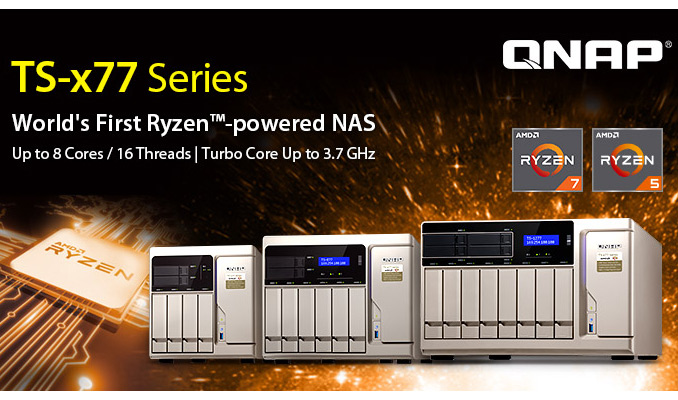
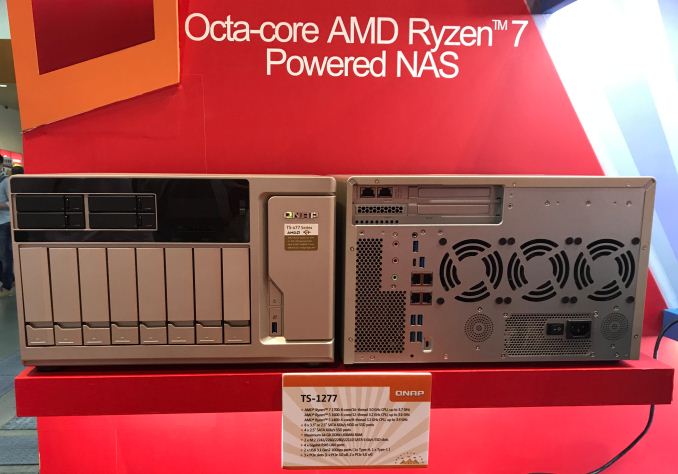

 Quote
Quote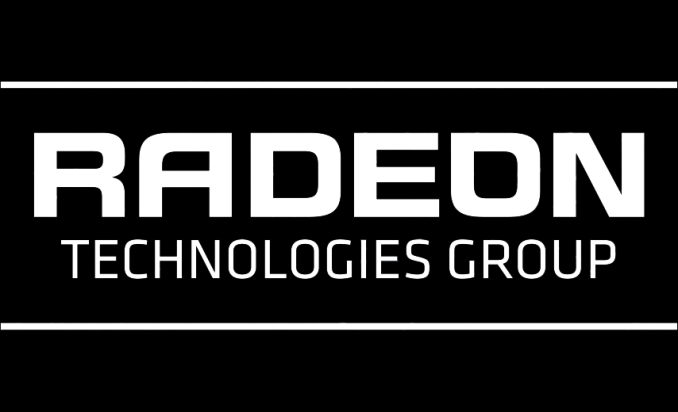

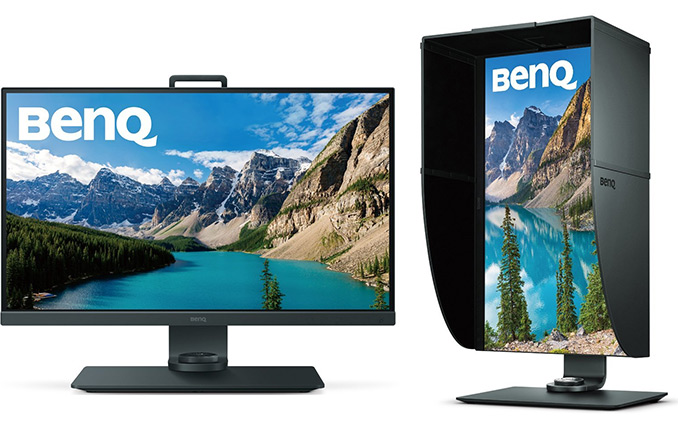


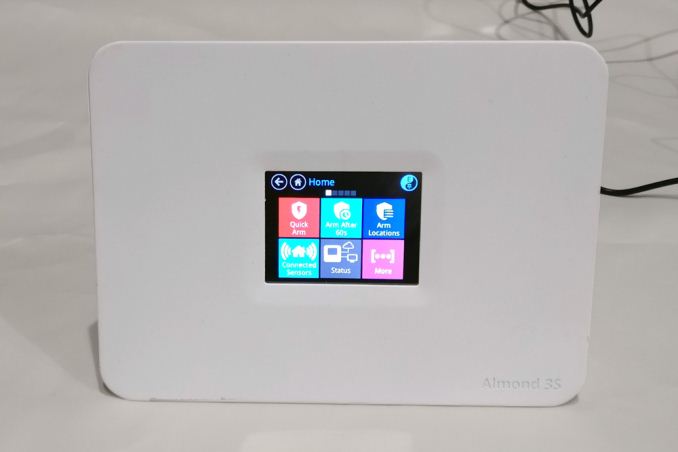
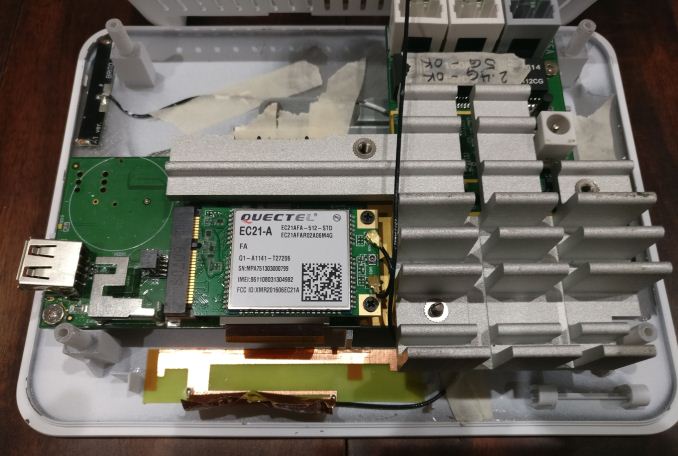
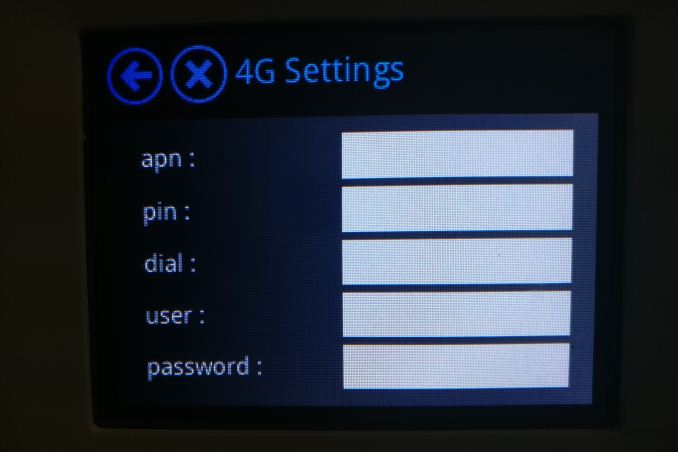
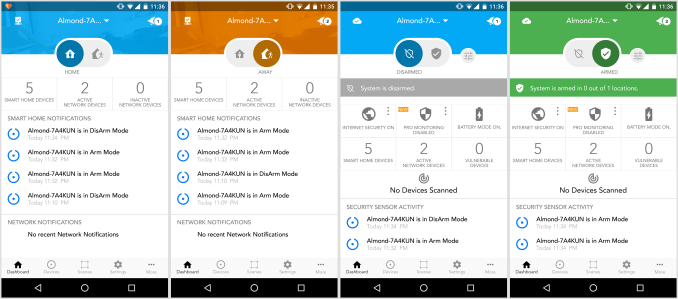






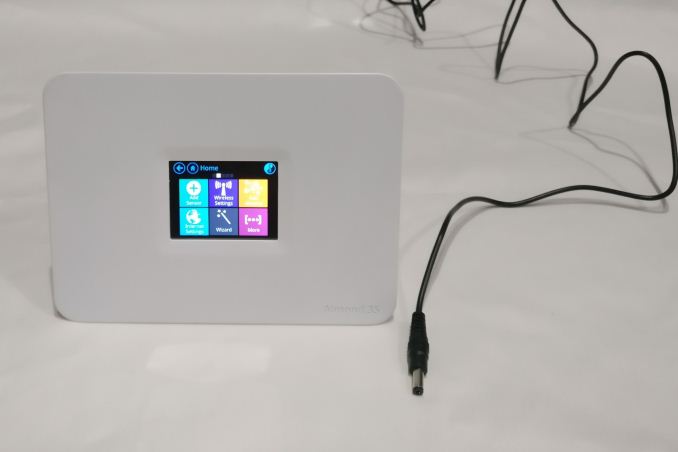


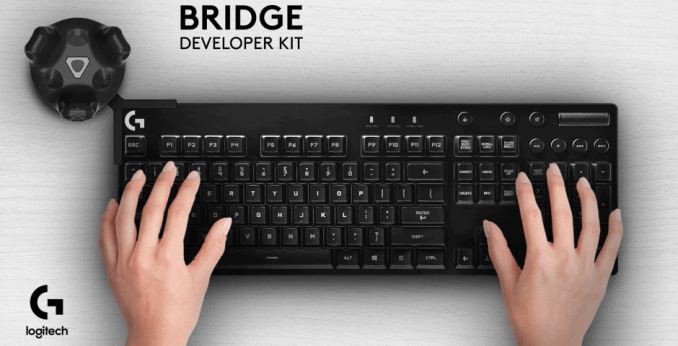

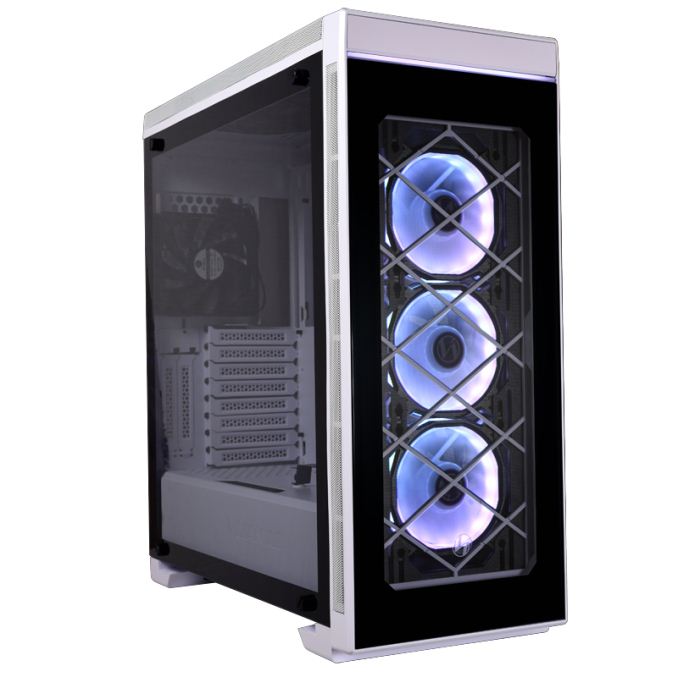
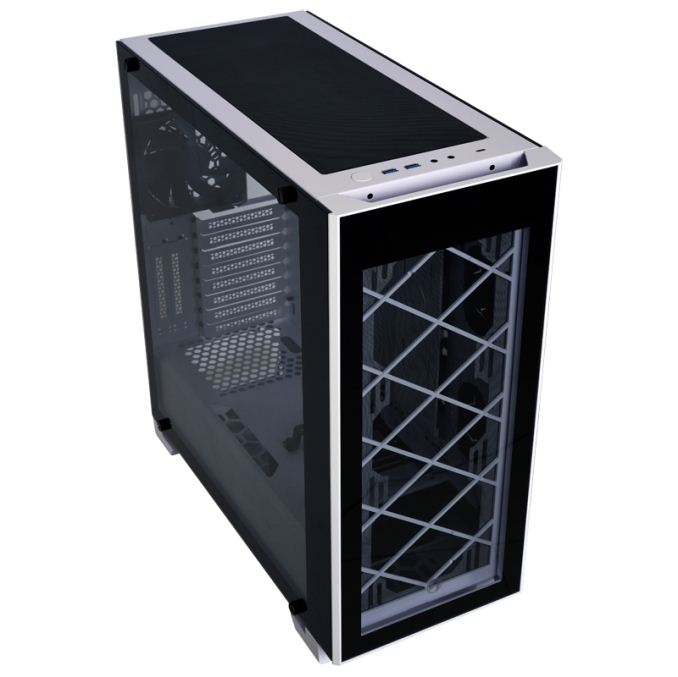
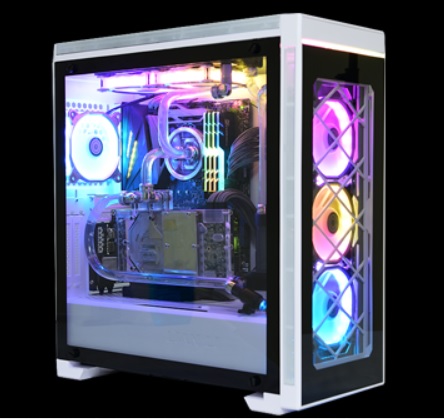


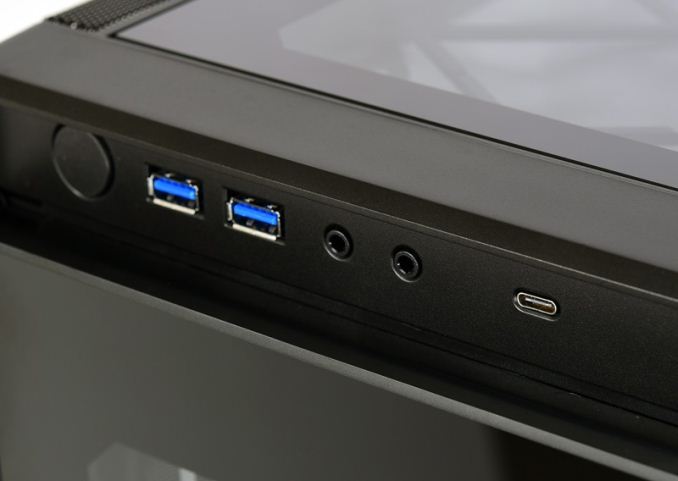
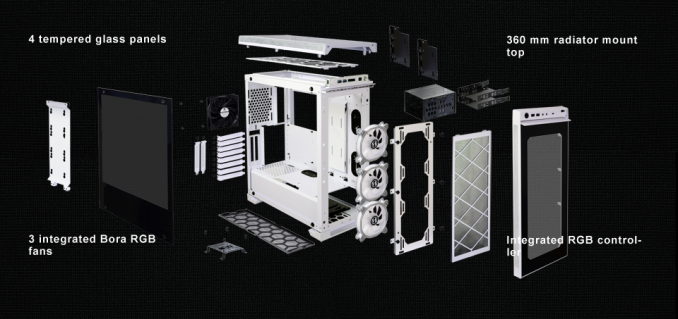



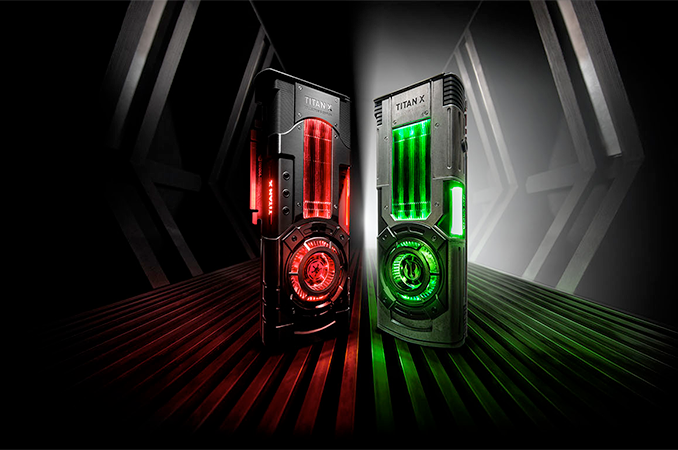
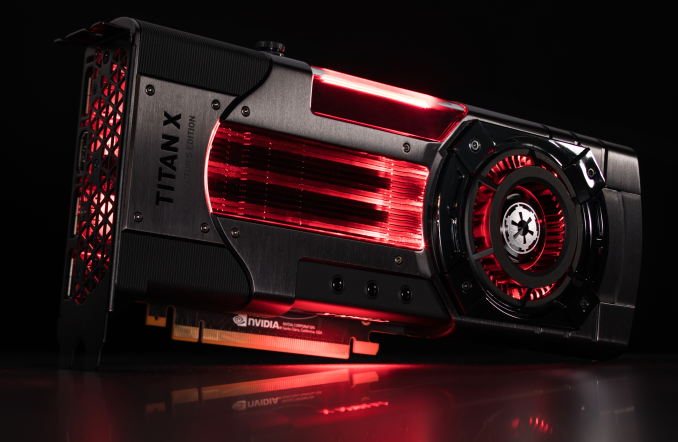
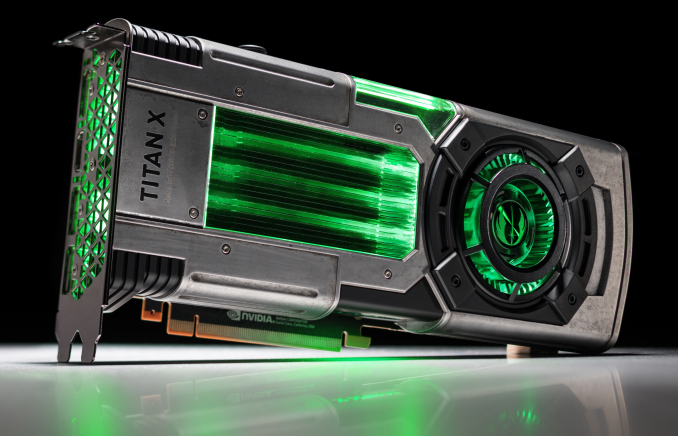
















Bookmarks